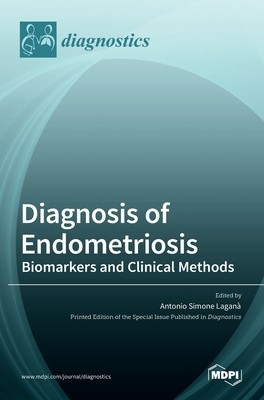
- We will send in 10–14 business days.
- Publisher: MDPI AG
- ISBN-10: 3036528016
- ISBN-13: 9783036528014
- Format: 17 x 24.4 x 1.3 cm, hardcover
- Language: English
- SAVE -10% with code: EXTRA
Diagnosis of Endometriosis (e-book) (used book) | bookbook.eu
Reviews
Description
Endometriosis is defined as the presence of endometrial-like endometrial cells, glands, and stroma outside the uterus, causing a wide range of symptoms and signs, including acute and chronic pelvic pain and infertility. Endometriosis affects approximately 10% of women of reproductive age, and up to 50% of infertile women. The etiopathogenesis of endometriosis still remains controversial: immune, hormonal, genetic, and epigenetic factors may be all involved, and several theories have been proposed to explain it.
One of the main problems for the management of endometriosis is the significant diagnostic delay: to date, several biomarkers are currently being tested in order to provide a reliable non-invasive diagnosis in case of symptoms and signs suspicious for endometriosis.
In addition, ultrasound techniques and magnetic resonance imaging are evolving rapidly, allowing for better accuracy, even with the use of artificial intelligence. Finally, new potential histological makers are helping to correlate the occurrence of endometriosis in different anatomical landmarks, supporting specific pathways to clarify the etiology of the disease.
EXTRA 10 % discount with code: EXTRA
The promotion ends in 14d.23:08:34
The discount code is valid when purchasing from 10 €. Discounts do not stack.
- Publisher: MDPI AG
- ISBN-10: 3036528016
- ISBN-13: 9783036528014
- Format: 17 x 24.4 x 1.3 cm, hardcover
- Language: English English
Endometriosis is defined as the presence of endometrial-like endometrial cells, glands, and stroma outside the uterus, causing a wide range of symptoms and signs, including acute and chronic pelvic pain and infertility. Endometriosis affects approximately 10% of women of reproductive age, and up to 50% of infertile women. The etiopathogenesis of endometriosis still remains controversial: immune, hormonal, genetic, and epigenetic factors may be all involved, and several theories have been proposed to explain it.
One of the main problems for the management of endometriosis is the significant diagnostic delay: to date, several biomarkers are currently being tested in order to provide a reliable non-invasive diagnosis in case of symptoms and signs suspicious for endometriosis.
In addition, ultrasound techniques and magnetic resonance imaging are evolving rapidly, allowing for better accuracy, even with the use of artificial intelligence. Finally, new potential histological makers are helping to correlate the occurrence of endometriosis in different anatomical landmarks, supporting specific pathways to clarify the etiology of the disease.


Reviews